Alfa Romeo Junior vs VW ID.4 – Which one offers the better deal?
Compare performance, boot capacity, efficiency and price at a glance.
Find out which car is the better choice for you – Alfa Romeo Junior or VW ID.4?
Costs and Efficiency:
Price and efficiency are key factors when choosing a car – and this is often where the real differences emerge.
Alfa Romeo Junior has a noticeable advantage in terms of price – it starts at 25700 £, while the VW ID.4 costs 34600 £. That’s a price difference of around 8901 £.
In terms of energy consumption, the advantage goes to the Alfa Romeo Junior: with 15.10 kWh per 100 km, it’s slight more efficient than the VW ID.4 with 15.60 kWh. That’s a difference of about 0.50 kWh.
As for range, the VW ID.4 performs distinct better – achieving up to 569 km, about 159 km more than the Alfa Romeo Junior.
Engine and Performance:
Power, torque and acceleration say a lot about how a car feels on the road. This is where you see which model delivers more driving dynamics.
When it comes to engine power, the VW ID.4 has a slightly edge – offering 340 HP compared to 280 HP. That’s roughly 60 HP more horsepower.
In acceleration from 0 to 100 km/h, the VW ID.4 is barely noticeable quicker – completing the sprint in 5.40 s, while the Alfa Romeo Junior takes 5.90 s. That’s about 0.50 s faster.
In terms of top speed, the Alfa Romeo Junior performs slightly better – reaching 206 km/h, while the VW ID.4 tops out at 180 km/h. The difference is around 26 km/h.
There’s also a difference in torque: VW ID.4 pulls significantly stronger with 679 Nm compared to 345 Nm. That’s about 334 Nm difference.
Space and Everyday Use:
Beyond pure performance, interior space and usability matter most in daily life. This is where you see which car is more practical and versatile.
Both vehicles offer seating for 5 people.
In curb weight, Alfa Romeo Junior is clearly lighter – 1380 kg compared to 1975 kg. The difference is around 595 kg.
In terms of boot space, the VW ID.4 offers distinct more room – 543 L compared to 415 L. That’s a difference of about 128 L.
In maximum load capacity, the VW ID.4 performs somewhat better – up to 1575 L, which is about 295 L more than the Alfa Romeo Junior.
When it comes to payload, VW ID.4 evident takes the win – 551 kg compared to 420 kg. That’s a difference of about 131 kg.
Who comes out on top?
Overall, the VW ID.4 shows itself to be leaves the rival little chance and secures the title of DriveDuel Champion.
It convinces with the more balanced overall package and proves to be the more versatile choice for everyday use.
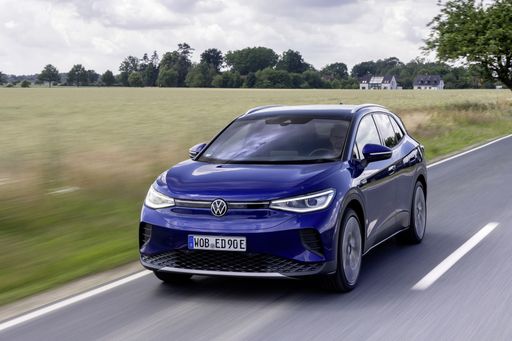 @ Volkswagen AG / VW Media
@ Volkswagen AG / VW Media
VW ID.4
Alfa Romeo Junior
The Alfa Romeo Junior captures the essence of Italian design with its sleek lines and compact dimensions, making it an icon of elegance and performance. With a spirited driving experience and a charming retro aesthetic, it appeals to enthusiasts and casual drivers alike. This delightful car embodies the brand's rich heritage while remaining a fun and engaging option for those seeking a unique automotive experience.
details @ Alfa Romeo / Stellantis Media
@ Alfa Romeo / Stellantis Media
 @ Alfa Romeo / Stellantis Media
@ Alfa Romeo / Stellantis Media
 @ Alfa Romeo / Stellantis Media
@ Alfa Romeo / Stellantis Media
VW ID.4
The VW ID.4 represents Volkswagen's commitment to the electric vehicle market, combining contemporary design with sustainability. Its spacious interior and intuitive technology make it an attractive choice for those seeking comfort and innovation in an eco-friendly package. With a focus on electric performance and practicality, this car is set to be a popular option among environmentally-conscious drivers.
details @ Volkswagen AG / VW Media
@ Volkswagen AG / VW Media
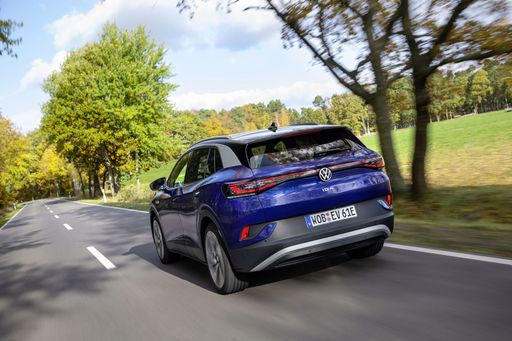 @ Volkswagen AG / VW Media
@ Volkswagen AG / VW Media
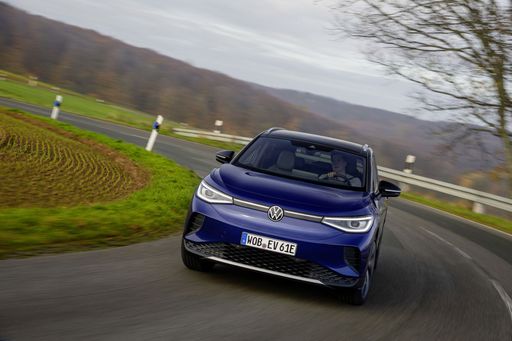 @ Volkswagen AG / VW Media
@ Volkswagen AG / VW Media
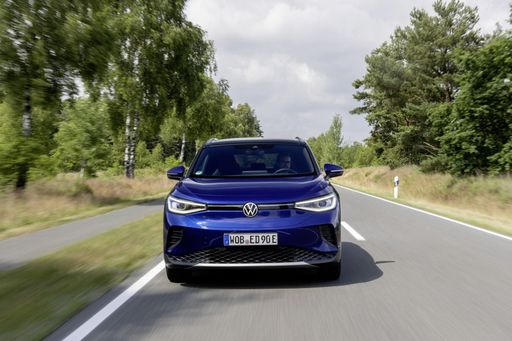 @ Volkswagen AG / VW Media
@ Volkswagen AG / VW Media
 @ Volkswagen AG / VW Media
@ Volkswagen AG / VW Media
 @ Volkswagen AG / VW Media
@ Volkswagen AG / VW Media
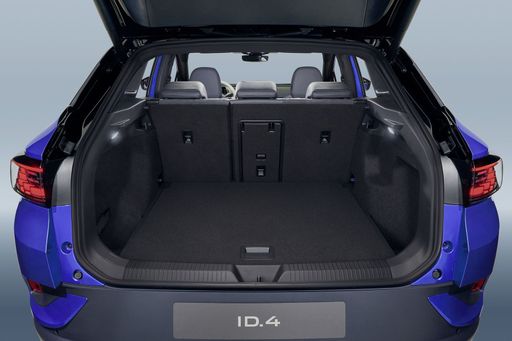 @ Volkswagen AG / VW Media
@ Volkswagen AG / VW Media
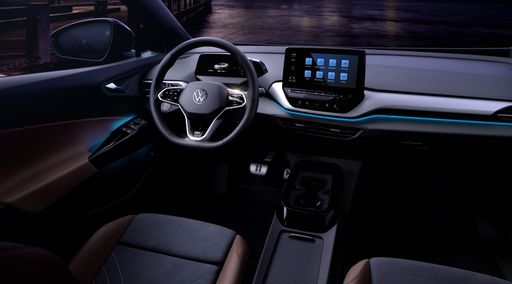 @ Volkswagen AG / VW Media
@ Volkswagen AG / VW Media
 @ Alfa Romeo / Stellantis Media
@ Alfa Romeo / Stellantis Media
|
 @ Volkswagen AG / VW Media
@ Volkswagen AG / VW Media
|
|
|
|
Costs and Consumption |
|
|---|---|
|
Price
25700 - 41600 £
|
Price
34600 - 47200 £
|
|
Consumption L/100km
4.8 - 5.4 L
|
Consumption L/100km
-
|
|
Consumption kWh/100km
15.1 - 17.5 kWh
|
Consumption kWh/100km
15.6 - 17 kWh
|
|
Electric Range
344 - 410 km
|
Electric Range
356 - 569 km
|
|
Battery Capacity
0.4 - 51 kWh
|
Battery Capacity
52 - 77 kWh
|
|
co2
0 - 119 g/km
|
co2
0 g/km
|
|
Fuel tank capacity
44 - 45 L
|
Fuel tank capacity
-
|
Dimensions and Body |
|
|---|---|
|
Body Type
SUV
|
Body Type
SUV
|
|
Seats
5
|
Seats
5
|
|
Doors
5
|
Doors
5
|
|
Curb weight
1380 - 1689 kg
|
Curb weight
1975 - 2248 kg
|
|
Trunk capacity
340 - 415 L
|
Trunk capacity
543 L
|
|
Length
4173 mm
|
Length
4582 - 4584 mm
|
|
Width
1781 mm
|
Width
1852 mm
|
|
Height
1505 - 1538 mm
|
Height
1619 - 1634 mm
|
|
Max trunk capacity
1205 - 1280 L
|
Max trunk capacity
1575 L
|
|
Payload
390 - 420 kg
|
Payload
511 - 551 kg
|
Engine and Performance |
|
|---|---|
|
Engine Type
Electric, Petrol MHEV
|
Engine Type
Electric
|
|
Transmission
Automatic
|
Transmission
Automatic
|
|
Transmission Detail
Dual-Clutch Automatic, Reduction Gearbox
|
Transmission Detail
Reduction Gearbox
|
|
Drive Type
Front-Wheel Drive, All-Wheel Drive
|
Drive Type
Rear-Wheel Drive, All-Wheel Drive
|
|
Power HP
136 - 280 HP
|
Power HP
170 - 340 HP
|
|
Acceleration 0-100km/h
5.9 - 9.1 s
|
Acceleration 0-100km/h
5.4 - 9 s
|
|
Max Speed
150 - 206 km/h
|
Max Speed
160 - 180 km/h
|
|
Torque
230 - 345 Nm
|
Torque
310 - 679 Nm
|
|
Number of Cylinders
3
|
Number of Cylinders
-
|
|
Power kW
100 - 207 kW
|
Power kW
125 - 250 kW
|
|
Engine capacity
1199 cm3
|
Engine capacity
-
|
General |
|
|---|---|
|
Model Year
2024 - 2025
|
Model Year
2023 - 2025
|
|
CO2 Efficiency Class
A, C, D
|
CO2 Efficiency Class
A
|
|
Brand
Alfa Romeo
|
Brand
VW
|
What drive types are available for the Alfa Romeo Junior?
Available configurations include Front-Wheel Drive or All-Wheel Drive.
The prices and data displayed are estimates based on German list prices and may vary by country. This information is not legally binding.
